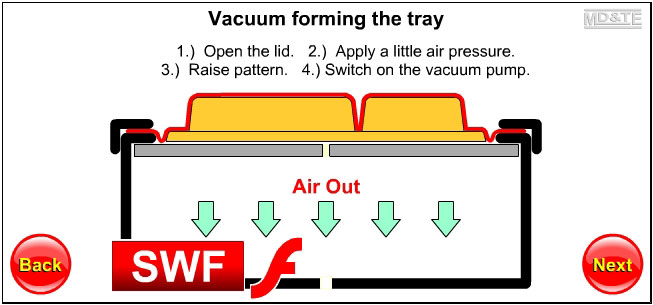 |
|
Click on the screenshot above to view the "Vacuum Forming a Snack Tray" animation by Laszlo Lipot |
|
|
|
Design and Make Assignment (DMA): Snack tray for an airline |
The drawing shows a basic design for a plastic snack tray that will be used by an airline on flights of between 2-3 hours duration. The tray will hold a snack consisting of 3 parts:
The drawing shows a tray with two compartments but it should have three. Design BriefDesign and make a prototype plastic snack tray that will hold a snack consisting of a main meal, a cupcake and an orange drink. SpecificationThe tray must be made from a sustainable plastic material that can be washed and re-used. It must be as light as possible, yet be rigid enough to hold the snack without bending or twisting. One compartment must be the correct size for a standard cupcake foil or paper case. One compartment must be the correct size for a standard sized plastic cup. Industrial Production RequirementsYou should describe at least two plastic forming processes that could be used to manufacture the snack tray in large numbers. Presentation Requirements
Planning for MakingYou should describe the stages in manufacturing the snack tray. Additional information
PrototypeA prototype is a finished, working product that is still at the testing and evaluation stage. It is the first one of a series that is likely to be reproduced in large numbers. Sustainable PlasticsSustainable plastics are made from renewable sources such as wheat, corn, potatoes, grass and palm fibre. They are biodegradable so discarded products do not have a long term effect on the environment. Sustainable plastics can be composted as they are biodegradable. On the other hand, plastics made from fossil fuels are non biodegradable. Oil, the raw material from which most plastics are made, is nonrenewable. Discarded or dumped waste plastics have a catastrophic and long term effect on the environment, on land and in the sea.
|
||
| Click here to view the PDF version of this resource. | 
|
 |